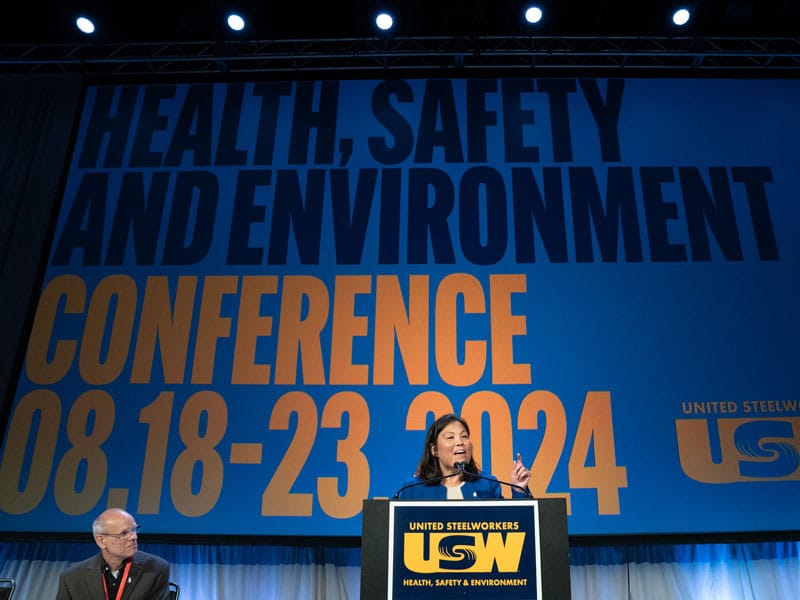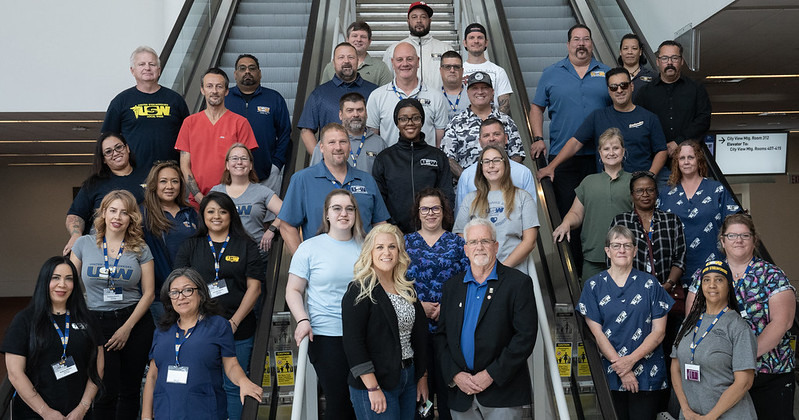Worker-Driven Triangle of Prevention Program Helps Improve Workplace Health and Safety
When there is a health and safety incident, management’s first reaction after conducting an investigation is to pinpoint blame on employees and discipline or terminate them. No attempt is made to investigate contributing causes of the event. Lessons are not learned, and the incident repeats itself.
Other companies’ approach to health and safety is for employees to observe other employees for unsafe behavior. This ignores other factors that cause incidents: inadequate design and engineering of systems; delayed maintenance and inspection; mitigation and warning devices that do not work; lack of or inadequate training; pressure to take shortcuts and ignore procedures in order to reach production goals; lack of documentation when a change in procedures is made; inadequate personal protective equipment; management’s decision to ignore safety warnings and reports; and other aspects of the Process Safety Management standard.
Tired of this reactive approach to health and safety that did not make the workplace safer, our union and its activist members created the Triangle of Prevention (TOP) program. It is a proactive tool to prevent incidents. There are three sides to TOP: union design and leadership; systems of safety training and investigations; and comprehensive tracking of results.
Employee Participation
Union-led and driven, TOP gives workers ownership over health and safety conditions at their workplace. Employees work as partners with management in identifying hazards, investigating incidents and near miss events that could become catastrophic, devising solutions using the systems of safety approach, tracking events, and ensuring solutions are implemented on a timely basis.
TOP is not, however, a substitute for a comprehensive health and safety program; a health and safety process; health and safety contract language; worker job-specific training, or required safety training.
It requires buy-in from the local union, workers and, especially, management. By having union and worker participation in health and safety matters, corporate managers at some companies feel they will lose control over workplace safety and their ability to operate their facilities as they see fit.
In reality, the people who work at these plants, day in and day out, understand operations and equipment in detail. They know when something is not running correctly and what could cause a catastrophic event. By being involved in the TOP program, workers help management operate safely to avoid catastrophic incidents that cost lives, injuries, disabilities, lawsuits and regulatory fines.
The TOP program has its own structure, which includes for each site a TOP representative, TOP leadership team, worker-trainers and TOP investigators. All of the positions receive training, and the entire plant, including managers and non-represented staff employees, are given an 8-hour initial TOP awareness training and annual 4-hour refresher training.
Systems of Safety Training and Investigation
Systems of safety training focuses on seven major safety systems: design and engineering, mitigation devices, maintenance and inspection, warning devices, training, procedures, and personal protective equipment.
Accidents, near misses and process upsets are investigated to find the root cause(s). Workers are encouraged to report these events because in the TOP program, the employer agrees to a no-discipline policy for reporting or being involved in a near miss. The goal is to prevent worker injuries and deaths from happening, not punish workers for making mistakes.
Measuring and Tracking Incidents
Focusing on worker behavior alone is a one-sided approach and misses all the system and process safety factors that can cause an incident.
A low OSHA rate does not mean a workplace is safe. Tracking broad measures of safety system performance, near misses, process upsets and incidents identifies system failures. TOP personnel recommend solutions to eliminate or control hazards.
TOP also tracks recommendations to completion, and lessons learned are shared with workers at the facility, at all of a company’s sites and across the industry to prevent incident reoccurrence. This preventative action creates a safer industry for workers and the communities surrounding these plants.
For More Information
If your local would like to get more information about the USW’s TOP program, please contact Steve Doherty with the Tony Mazzocchi Center at sdoherty@uswtmc.org, 920-664-9845 (Mobile) or 412-562-2561 (Office).
By clicking Sign Up you're confirming that you agree with our Terms and Conditions.
Recent News Articles
Want to Learn More?
See how the USW is making a real difference in our communities and our workplaces.

